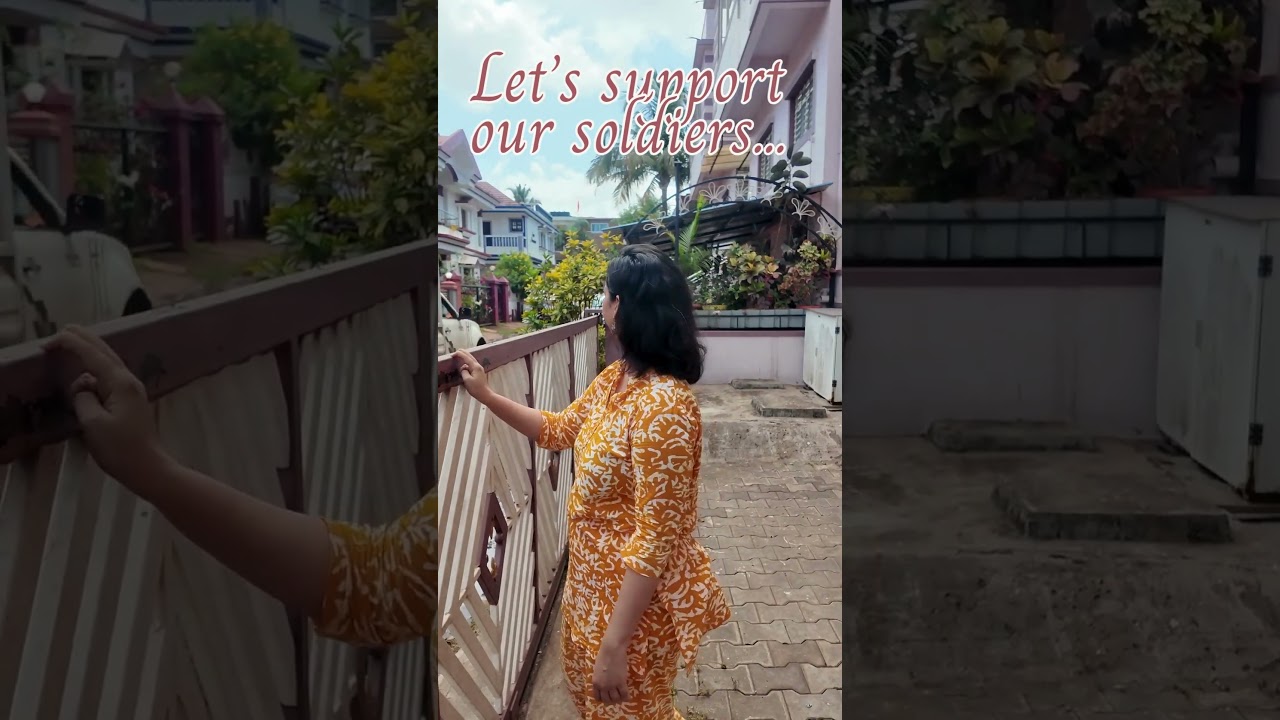Womens Preparedness
The ultimate guide to outdoor survival: tips and tricks for staying safe

Hello, ladies! My name is Jade Tripp and I am thrilled to be sharing with you the ultimate guide to outdoor survival. As an expert in women’s self-defense, personal protection, preparedness, and prepping, I understand the importance of being prepared for any situation that may arise when venturing into the great outdoors.
Whether you are hiking in the mountains, camping in the woods, or simply going for a stroll in your local park, it is crucial to be aware of your surroundings and to have a plan in place for staying safe. In this article, I will be providing you with some essential tips and tricks to ensure that you are well-equipped to handle any outdoor survival situation.
First and foremost, it is important to always let someone know where you are going and when you expect to return. This simple step can make all the difference in the event that something goes wrong and you are unable to make it back on time. Additionally, make sure to pack a fully stocked first aid kit, plenty of water, and non-perishable food in case you get lost or stranded.
When it comes to personal protection, self-defense techniques can be invaluable in dangerous situations. Taking a self-defense class or carrying pepper spray can give you the confidence and skills needed to protect yourself from potential threats. Remember, your safety is always the top priority, so never be afraid to take action if you feel uncomfortable or threatened.
In terms of preparedness, it is essential to familiarize yourself with basic survival skills such as building a shelter, starting a fire, and finding clean water sources. Practice these skills in a controlled environment before heading out into the wild to ensure that you can confidently handle any emergency that may arise.
Lastly, prepping for outdoor survival means being proactive in taking steps to prevent potential dangers. Research the area you will be exploring, check the weather forecast, and be mindful of any wildlife that may pose a threat. By being aware of your surroundings and staying alert, you can minimize the risks and enjoy your outdoor adventures to the fullest.
To illustrate the importance of these tips and tricks, let me share a real-life example with you. Emily, a seasoned hiker, was exploring a new trail in the mountains when she suddenly got caught in a thunderstorm. Thanks to her preparedness and quick thinking, she was able to find shelter under a tree, start a fire to stay warm, and signal for help using her whistle. By staying calm and following the guidelines outlined in this article, Emily was able to survive the storm and make it back home safely.
In conclusion, the ultimate guide to outdoor survival is all about being proactive, prepared, and empowered to handle any situation that comes your way. Remember, your safety is in your hands, so take the necessary steps to stay safe and enjoy all that the great outdoors has to offer. Stay strong, stay safe, and happy adventuring, ladies!
Womens Preparedness
Empowering Women Through Orienteering: A Guide to Finding Your Way

Empowering Women Through Orienteering: A Guide to Finding Your Way
Hello, ladies! I’m Jade Tripp, and today, we’re diving into a topic that’s close to my heart and incredibly empowering: orienteering. You may be asking, “What does navigation have to do with self-defense or personal empowerment?” As it turns out, quite a lot! In our increasingly chaotic world, knowing how to navigate—both physically and metaphorically—can empower us like nothing else.
What is Orienteering?
Orienteering is a navigational skill that involves using a map and compass to find your way through unfamiliar territory. It’s more than just a sport; it’s a valuable life skill that fosters confidence, independence, and resilience. When you’re out in nature, relying on yourself to read a map and find your path, you learn to trust your instincts.
Why Orienteering is Essential—Especially for Women
In a daunting world where self-defense is crucial, knowing how to navigate unfamiliar environments can be a game-changer. When you can find your way confidently, you’re less likely to find yourself in vulnerable situations. High-stress moments can arise anywhere—whether you’re traveling abroad, hiking, or simply walking through your neighborhood at night. Empowering yourself with navigation skills not only builds confidence but also equips you for personal safety.
Real-Life Empowerment Through Orienteering
Let me share a couple of inspiring stories of women who have embraced orienteering and transformed their lives.
1. The Story of Sarah
Sarah, a 32-year-old mom from Colorado, took up orienteering after participating in a local women’s survival workshop. During a weekend camping trip, she discovered she had become reliant on her GPS. After almost getting lost in the woods on a day hike, she realized she needed more than tech gadgets to find her way. Through orienteering, she learned to read topographical maps, use a compass, and trust her instincts. Now, she confidently navigates family hikes and teaches her children the importance of being aware of their surroundings.
2. Anya: The Urban Explorer
Then there’s Anya, a 27-year-old graphic designer living in New York City. Tired of feeling anxious while navigating public transit, she decided to take an orienteering class offered at her local park. What she discovered was not just the ability to read a map but also a deeper connection to her city. Armed with newfound confidence, she now explores neighborhoods she had previously avoided, often sharing her adventures online to inspire other women to conquer their spaces.
Getting Started with Orienteering
If you’re inspired by these stories and want to dive into orienteering, here’s how to get started!
1. Find a Class or Club
Look for local orienteering clubs or outdoor recreation programs. Many parks offer beginner classes. Organizations like the United States Orienteering Federation have resources and events specifically designed for newcomers. Having a supportive community of women can make this journey even more rewarding.
2. Get the Right Gear
Invest in a good map, compass, and comfortable hiking boots. You don’t need to break the bank; many outdoor shops offer gear specifically for beginners. As you progress, consider adding a whistle, headlamp, and a small survival kit to your pack. These additions can help in emergency situations.
3. Practice, Practice, Practice
Start in familiar areas before venturing into the wilderness. Work with friends or family members so you can share your experiences and learn together. As you become more comfortable, challenge yourself with more complex routes and terrains.
Tips for Safe Navigation
While orienteering can be an exciting adventure, safety is paramount. Here are some tips:
- Always Tell Someone Your Plans: Before heading out, share your intended route and expected return time with someone. This simple step can be lifesaving.
- Trust Your Instincts: If something doesn’t feel right, trust your gut. It’s better to turn back than to risk your safety.
- Be Aware of Your Surroundings: Whether you’re in the wilderness or an urban area, always pay attention to exits, landmarks, and possible escape routes.
Conclusion
Empowering yourself through orienteering can bring a wealth of benefits—from building essential navigation skills to fostering a community of supportive women. By stepping outside of our comfort zones and embracing the unknown, we not only become more self-reliant but also inspire others to do the same.
So ladies, let’s grab those maps and compasses, step into the wild, and find our way! The journey to empowerment truly begins with knowing how to navigate life, both in the wilderness and the everyday world. Remember, every step you take is a step toward confidence, safety, and the incredible realization of your potential. Happy navigating!
Womens Preparedness
Surviving the Unsurvivable: Stories of Survival in Extreme Conditions

Hello, wonderful women! I’m Jade Tripp, and today we’re diving into an empowering topic—survival in extreme conditions. The stories of resilience and strength I’m about to share are not just awe-inspiring; they serve as powerful reminders that we, too, are capable of facing challenges head-on.
Understanding the Mindset
When we talk about survival, it’s not just about physical endurance; it’s also about mental fortitude. The first step to surviving any extreme situation is to believe in your ability to do so. Remember, the human spirit is remarkably resilient, and our minds can be our fiercest allies when facing adversity.
The Story of a Marine: Jessica Lynch
Let’s start with the remarkable story of Jessica Lynch, the Army Private who was taken prisoner during the Iraq War in 2003. Her journey showed us what it means to survive against all odds. After her convoy was ambushed, Jessica was captured and held for eight days. She experienced physical and emotional trials, but her will to survive was unwavering.
Through sheer determination, she not only survived but also showcased incredible bravery. Her story reminds us of the importance of keeping a strong mindset, no matter the circumstances. Jessica’s experience teaches us that preparation, both mentally and physically, can make a significant difference in extreme situations.
Lessons Learned from Jessica’s Story:
-
Mental Resilience: Mentally prepare yourself for challenges. Meditation and visualization can strengthen your mindset.
- Physical Preparedness: Engage in regular physical exercise. Building strength can give you the confidence to tackle unexpected circumstances.
Surviving the Wild: The Tale of Sarah Outen
Next, let’s look at Sarah Outen, a British adventurer who undertook an awe-inspiring journey across the world on human power: cycling, rowing, and walking. During her travels, Sarah encountered extreme weather, dangerous animals, and isolation. When faced with challenges, such as capsizing in rough seas or dealing with severe fatigue, Sarah relied on her training and resilience to navigate through adversity.
Sarah’s journey teaches us the importance of preparedness. She trained rigorously, learned survival skills, and understood the environments she was entering.
Key Takeaways from Sarah’s Journey:
-
Training and Skills: Invest time in learning essential survival skills—first aid, navigation, and outdoor cooking can be incredibly valuable.
- Stay Informed: Research your environment. Whether it’s a hike, a camping trip, or a new city, being informed of potential risks is key to effective preparation.
The Power of Community: The Chilean Miners
In 2010, the world held its breath as 33 Chilean miners were trapped underground for 69 days. Their survival was a testament to the power of teamwork and community. Faced with the crushing reality of being trapped 2,300 feet below ground, they relied on each other for support and collaboration. They shared food, made rationing plans, and created a support system to endure their extreme conditions.
This story beautifully illustrates how community can bolster resilience. Sometimes, survival is not just about the individual; it’s about leaning on each other, sharing strengths, and working together to overcome challenges.
Takeaways from the Miners’ Experience:
-
Build a Support Network: Surround yourself with a community of supportive people who can help you in times of crisis. This can be friends, family, or local groups focused on self-defense and preparedness.
- Collective Problem-Solving: In challenging situations, working together can generate solutions you may not see on your own.
Preparing for the Unexpected
No matter where you find yourself, preparing for the unexpected is vital. While it’s impossible to predict every event, equipping yourself with knowledge and skills can significantly improve your chances of survival.
Practical Steps for Everyday Preparedness:
-
Self-Defense Classes: Enroll in classes that empower you with physical techniques to protect yourself. Knowing how to react can instill confidence.
-
Emergency Kits: Create a personal emergency kit for your home and car. Include items like a flashlight, first aid supplies, and non-perishable food.
-
Stay Alert: Always be aware of your surroundings. Trust your instincts—if something feels off, it probably is.
- Connect with Others: Join local groups focused on survival skills or self-defense. Exchanging knowledge helps bolster your preparedness while creating a supportive network.
In Conclusion
Facing extreme conditions is daunting, but the stories of those who have survived teach us invaluable lessons about resilience, community, and preparation. Remember that you are stronger than you realize, and when you invest in your skills and mindset, you can truly survive the unsurvivable.
As we part ways today, I want to leave you with this empowering thought: every challenge is an opportunity for growth. Embrace your inner strength, empower yourself with knowledge, and never hesitate to lean on your community. Together, we can overcome anything.
Stay safe and empowered, my friends! 🌟
Womens Preparedness
Let’s pray for our SOLDIERS..Operation Sindoor | India Vs Pakistan War Live Update | pahalgam

The ongoing tensions between India and Pakistan have sparked concerns about a potential war between the two nuclear-armed …
source
-

 Womens Self Defense10 months ago
Womens Self Defense10 months agoNew Legislation Empowers Women to Defend Themselves
-

 Self Defense News1 year ago
Self Defense News1 year agoShe was convicted of killing her abusive boyfriend. Now a Maple Grove woman is home awaiting a new trial.
-

 Self Defense News1 year ago
Self Defense News1 year agoSelf-Defense for All: The new Gracie Jiu-Jitsu Pasadena is for everyone | Online Features
-

 Womens Self Defense1 year ago
Womens Self Defense1 year agoTop 5 Self-Defense Techniques Every Woman Should Know
-

 Womens Fitness1 year ago
Womens Fitness1 year agoXtreme Bodyweight HIIT (Lots of Jumping!) | Joanna Soh (Fio Series)
-

 Womens Self Defense7 months ago
Womens Self Defense7 months agoUnderstanding State-by-State Variation in Self Defense Laws
-

 Womens Preparedness1 year ago
Womens Preparedness1 year agoThe Importance of Self-Sufficiency Skills in Today’s World
-

 Womens Preparedness1 year ago
Womens Preparedness1 year ago10 essential skills for surviving in the great outdoors

